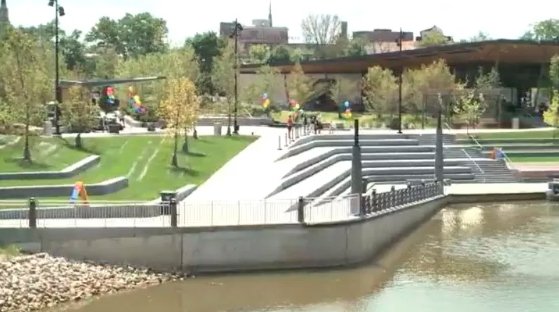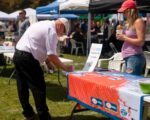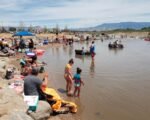FORT WAYNE, Ind. — As rainstorms continue to raise water levels along Fort Wayne’s rivers, the city’s Parks and Recreation Department says the system is working exactly as intended.
With several areas showing signs of minor flooding after days of rainfall, park officials are assuring residents that the city’s riverfront green spaces were specifically designed to handle high water—and bounce back quickly.
“It’s park land because we can’t build houses or other infrastructure on it,” said Parks and Recreation Director Steve McDaniel. “So you turn it into parks. And you make sure those parks can flood.”
900 acres in the floodplain—and that’s by design
Roughly 900 acres of Fort Wayne’s parkland sits in designated floodplains, much of it hugging the St. Marys, St. Joseph, and Maumee Rivers. But rather than treating this geography as a liability, city leaders say they’ve built it into the design ethos.
McDaniel said flooding occurs between three and six times a year. The key is using infrastructure and materials that can take the hit—and recover quickly.
Resilient by material:
-
Concrete walkways and features: Easy to hose down and restore.
-
Water-tolerant plants: Able to survive cycles of saturation and drying.
-
Minimal permanent structures: Few vulnerable buildings near riverbanks.
“When the water comes up, we deal with that,” McDaniel said. “When it goes down, we clean it up—and it’s back to parkland.”

Warning to visitors: Stay aware
Though the flooding is routine, it isn’t without risk. McDaniel urged visitors to stay alert, especially around riverfront parks like Promenade Park or the North River area.
“If you see floodwater, stay away from it,” he cautioned. “There’s a current to it. It’s not bath water by any means. Be safe in the parks and be conscious of your surroundings.”
He added that the department routinely posts warnings and closures when waters rise above safe levels. Even then, most of the impact is short-lived—typically lasting a few days before areas reopen.
Golf courses remain open—with limits
Despite the wet weather, city-run golf courses remain operational. The only caveat? No golf carts.
Courses are currently walking only, allowing waterlogged turf to recover without the additional stress of wheels. “If you want to get out and play, you still can,” McDaniel said.
Fort Wayne’s climate-conscious planning gets quiet win
While cities across the Midwest continue struggling with infrastructure damage from increased precipitation, Fort Wayne’s quiet, long-term strategy of building green buffers along flood zones is earning some low-key praise.
By allowing rivers to overflow into designated areas—with little to no economic disruption—the city has created a form of passive resilience. It also fits into broader national conversations about climate-adaptive public space design, especially as rainfall patterns intensify across the Midwest.
“We don’t fight the water,” McDaniel said. “We give it space—and then take it back when it’s done.”













